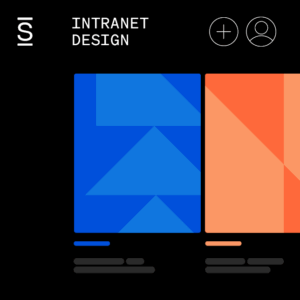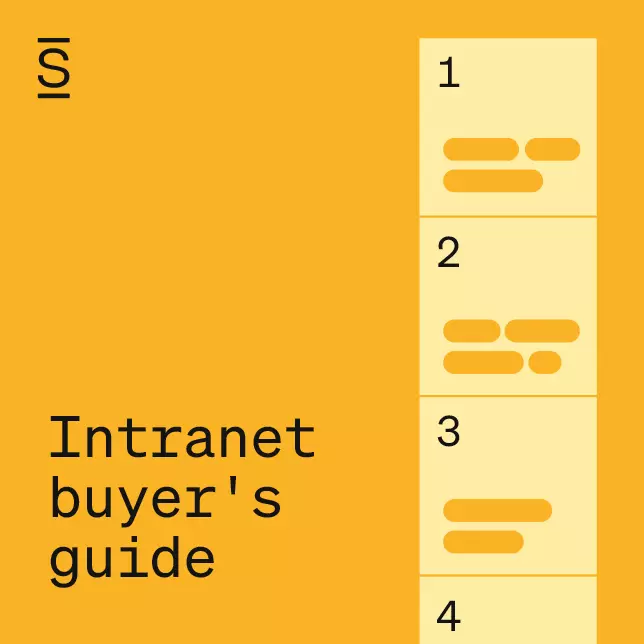If you’re looking to improve communication and collaboration in the workplace, choosing the right corporate intranet is a game-changer. Modern intranet solutions can raise user adoption rates, streamline communication channels, and vastly improve the digital employee experience.
This article outlines out today’s cutting-edge intranet best practices for design, implementation, management, usage analytics and return on investment (ROI).
Table of contents: Intranet best practices
- Intranet design principles
- Implementation and cost management
- Intranet content management
- Performance benchmarking and optimization
- Intranet ROI measurement and analytics
- Optimizing intranet for maximum ROI
Ready? Let’s get started.
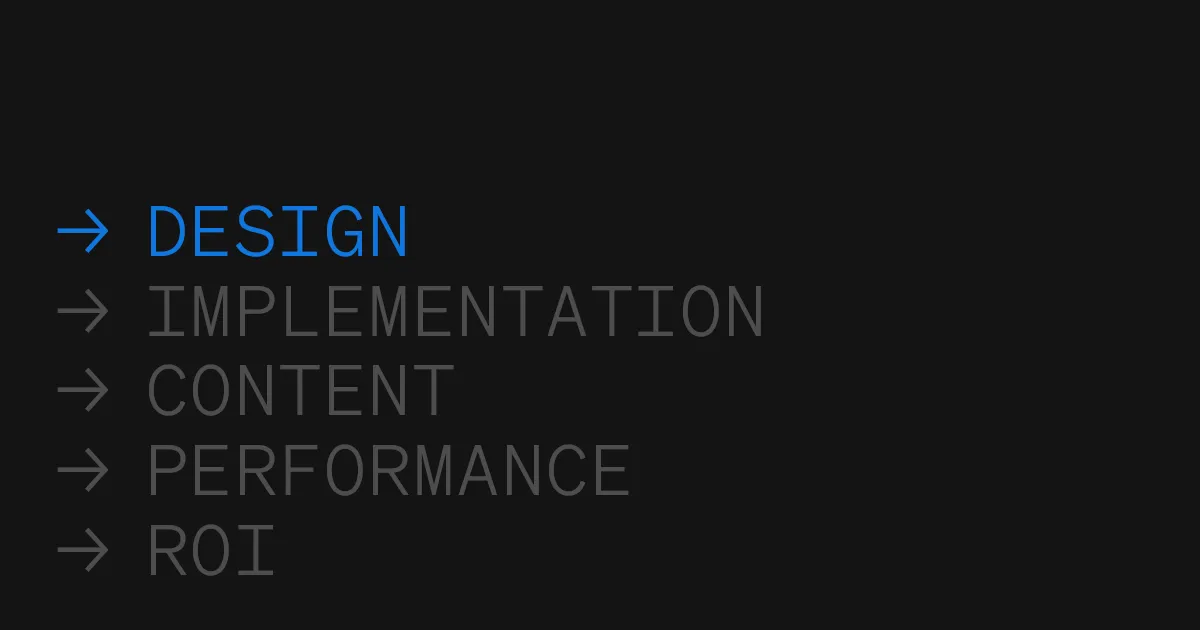
Best practices for intranet design
Today’s intranets are evolving rapidly. With recent advances in AI, these systems are becoming smarter than ever — and much more expensive to design and build from the ground up. Intranet designers need to be able to draw on a knowledge pool that’s both broad and deep, with a solid understanding of cloud technologies, security, UX design, machine learning, artificial intelligence (AI), API integrations and more.
Principles of successful intranet design
1. User-centered design
An effective intranet starts by putting employees at the heart of the design process. This means understanding employee needs, preferences and goals, and designing your intranet to meet (and exceed!) those requirements. User research and usability testing can help gather feedback to make sure the design is intuitive and user-friendly.
2. Secure and scalable
As fast as business moves today, everything in your tech stack needs to be prepared for growth. That includes your intranet. No matter how many employees you might need to add, whether through hiring or acquisitions, your intranet must be able to handle the influx of people and content with minimal risk of downtime, privacy leaks or data loss. Design it to remain adaptable — and secure — in any capacity.
3. Content personalization
An effective intranet helps curate content, focusing employees’ attention on what they need most. Unlike most communication systems, which tend to bury information over time, well-designed intranets surface relevant content to keep critical information at everyone’s fingertips. To do this effectively, intranets should be designed to respond to each employee individually, personalizing the content they see based on role, location and their own unique interests.
4. Multi-channel communication
Strong intranet design connects employees in real time across multiple devices and formats, expanding reach and engagement. This includes push and desktop notifications, newsletters, emails, chat tools and even social campaigns — reaching employees wherever they are, in ways that feel intuitive and familiar.
5. Intelligent search capabilities
Information should be structured in a logical and intuitive way, making it easy for everyone to find what they’re looking for in their digital workplace. Traditional tag-based search is overly dependent on manual efforts by both admins and end users, making it less reliable and accurate than AI-powered natural language search. AI-based search understands the context of a query and continuously adapts and improves over time, delivering more relevant and accurate search results. Today’s modern intranet systems are incorporating AI to make the search process smarter and more intuitive than ever.
6. Strong collaboration tools
A successful intranet design needs to include tools that facilitate collaboration and communication. This includes social features, chat functionality, project management tools and document-sharing capabilities. Most importantly, your intranet should integrate with popular tools such as Slack, Zoom, Atlassian, Asana and more, giving employees the freedom to use the tools they like to use and work the way they like to work.
7. Engaging mobile-first experience
One of the biggest struggles in managing an intranet is making sure employees actively want to use it. And for organizations with a frontline, it’s never been as important to connect them with the rest of the workforce and give them access to company information, communication and tools. To simplify administration, make sure that the mobile app can be managed in one platform.
Giving employees an easy, secure way to engage with each other in a friendly, social-media-style mobile app encourages connection.
It brings them back to their feed time and again with the people they want to engage with and the content they want to read.
8. Regular updates and maintenance
Intranets are not a one-time design project — they require updates and maintenance to stay relevant and useful. This includes reviewing content on a regular basis to update information and fix broken links, so your brand-new intranet doesn’t turn into a giant junk drawer over time. It’s also important to monitor your system for outdated, unused content to flag it for revision or removal.
For more information on the most important features of a modern intranet design, download our ebook: Top 10 intranet features that matter
Optimizing intranet usability
At work, few things matter more than efficient productivity. And while tools like Jira, Figma, Google Workspace and more might help people get things done, they can also fragment communication — leading to hours of wasted time as employees search one tool after another for key information.
A highly usable intranet can become a single source of truth for everything from company news stories to task-specific conversations — giving employees a single portal for all their communications and knowledge management.
Intranet navigation best practices
Avoid mega-menus
Trying to force all company knowledge into an expansive hierarchical menu causes user confusion and frustration. Instead, intranet navigation should be intentionally designed and personalized to specific regions or users. Like a well-designed social media platform, the rest of the content should feel like an individualized digital experience that learns and surfaces relevant content to engage users.
Include intelligent search
Today’s workers are all too familiar with the experience of hunting through countless emails, messages, files and notifications for that one critical piece of information that they can’t seem to find.
Now, imagine searching every form of communication all at once, with AI that understands natural language.
Smart intranet search capability can save an enterprise organization thousands of productive hours every week.
Cull the content herd
One of the toughest challenges in intranet navigation is separating important, recent content from the out-of-date jumble that accumulates all too quickly when content owners come and go. A strong intranet strategy needs to build content governance into the digital experience, helping you keep your knowledge base up to date automatically.
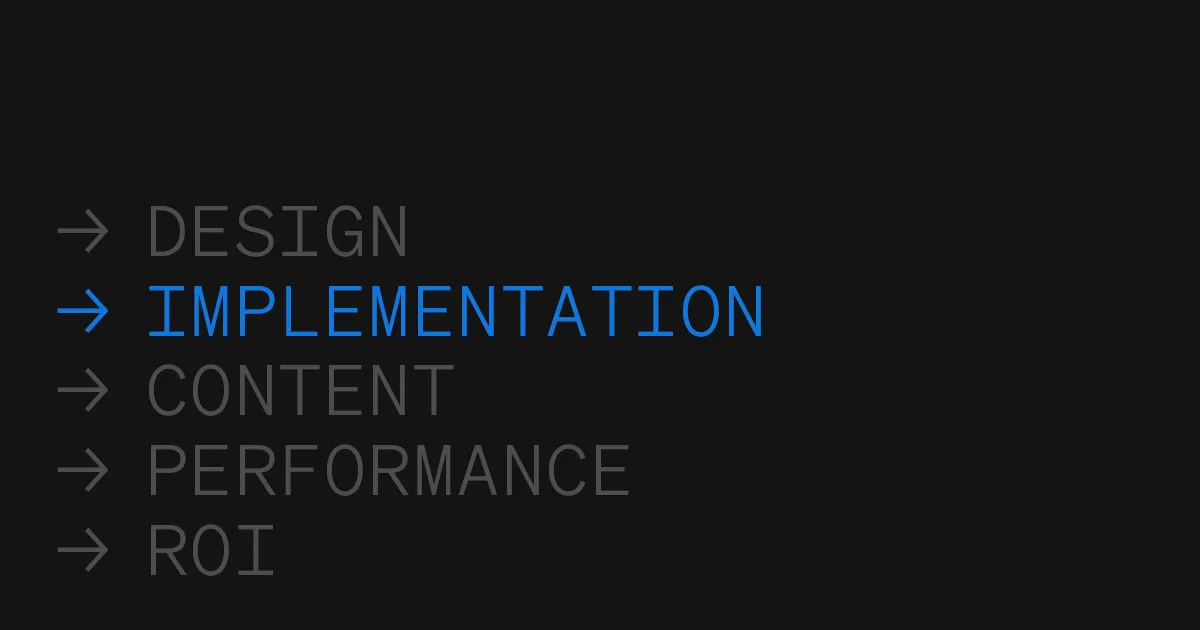
Intranet implementation and cost management
Implementing the right intranet can improve communication, enhance collaboration, and streamline internal processes. Still, it’s essential to weigh the benefits against the costs, which can vary with the size of the company, the desired features and functionality, and whether it is built in-house or outsourced to a third-party provider.
A true cost analysis needs to account for hardware, software, licensing, training, maintenance, and ongoing support — not just in money but in employee time.
Developing an intranet strategy with realistic goals and milestones
The most important decision you can make in your intranet strategy is whether you want to buy an intranet or build one.
Beware of technical debt. Arguably, the ongoing cost of upgrades and maintenance is higher than the upfront implementation costs.
Your intranet will not be a static asset — it will grow and evolve over time, not just with your company but as technologies like artificial intelligence and machine learning continue to develop. If you decide to build your intranet and you want to keep your system ahead of the curve, be prepared to pay for a team of leading-edge developers.
You’ll also need to determine a roadmap for your implementation strategy, including realistic goals and milestones along the way. These timeline expectations let you measure your progress against expected goals and keep your plan on track.
Estimating the cost of intranet implementation
Estimating the cost of intranet implementation can also be complicated, especially when pricing an outsourced platform against the cost of designing, building and maintaining a custom solution in-house. Finance teams should take care when assessing the internal cost of labor involved in a custom intranet, especially when it comes to providing continuous upkeep and IT support.
Choosing the right intranet platform
In addition to cost evaluation, the following steps can help your intranet team determine the right intranet for your organization.
1. Identify your communication and productivity goals. Determine why you need an intranet platform and what specific functionalities and features are crucial for your organization.
2. Evaluate scalability and flexibility. Consider the ability of the intranet platform to accommodate your organization’s growth and adapt to changing needs.
3. Assess ease of use and user experience. Look for an intranet platform that’s intuitive and user-friendly, ensuring that employees can quickly and easily navigate its features.
4. Consider integration capabilities. Determine if the intranet platform can seamlessly integrate with existing systems and tools used by your organization.
5. Evaluate security measures. Ensure that the intranet platform provides robust security features to protect sensitive company information and data.
6. Review configuration options. Determine if the intranet platform allows for easy configuration to align with your organization’s needs and preferences.
7. Assess mobile accessibility. Consider whether the intranet platform is mobile-friendly and accessible on different devices to cater to employees working remotely or on the go.
8. Research customer support and training requirements. Look for an intranet platform that offers reliable customer support while needing little to no training to use.
Check out this webinar for strategies to identify the right intranet features for your organization’s unique needs: Intranet feature must-haves for the new work experience
Training employees for efficient intranet usage
Here’s the simple truth — the more training your intranet platform requires, the less likely people will be to use it consistently. Look for an intranet with a smart UX design — one people can pick up and use intuitively.
Optimizing your intranet for remote work
Making sure your intranet is optimized for remote work is critical in modern work environments, especially for an enterprise organization with a widely distributed workforce.
By optimizing your intranet for a digital work experience, you can ensure seamless collaboration, accessibility and data sharing across all your teams.
Today’s intranet platforms are cloud-based, allowing your entire workforce to access your intranet easily, no matter where they happen to be located. A cloud-based intranet can also be device-agnostic, offering a familiar experience across phones, tablets, laptops and desktop computers.
Choosing an intranet that’s mobile-friendly
A mobile-friendly intranet is pivotal for maximum intranet engagement. It allows seamless access to a company’s network and reduces barriers for remote workers. It also offers greater flexibility, ensuring that employees can access crucial information and collaborate effectively regardless of their location.
More importantly, a mobile-friendly intranet lets your employees access your intranet the way they want to, on a device that feels comfortable and familiar.
When your intranet is designed intentionally for a mobile experience, employees will pick it up more quickly and engage with it more often. Plus, by putting your intranet in their pockets, you’ll have a much broader reach if you ever need to reach your workforce with critical information in a hurry.
Explore how to choose an intranet that saves IT time and resources: Implementation made simple
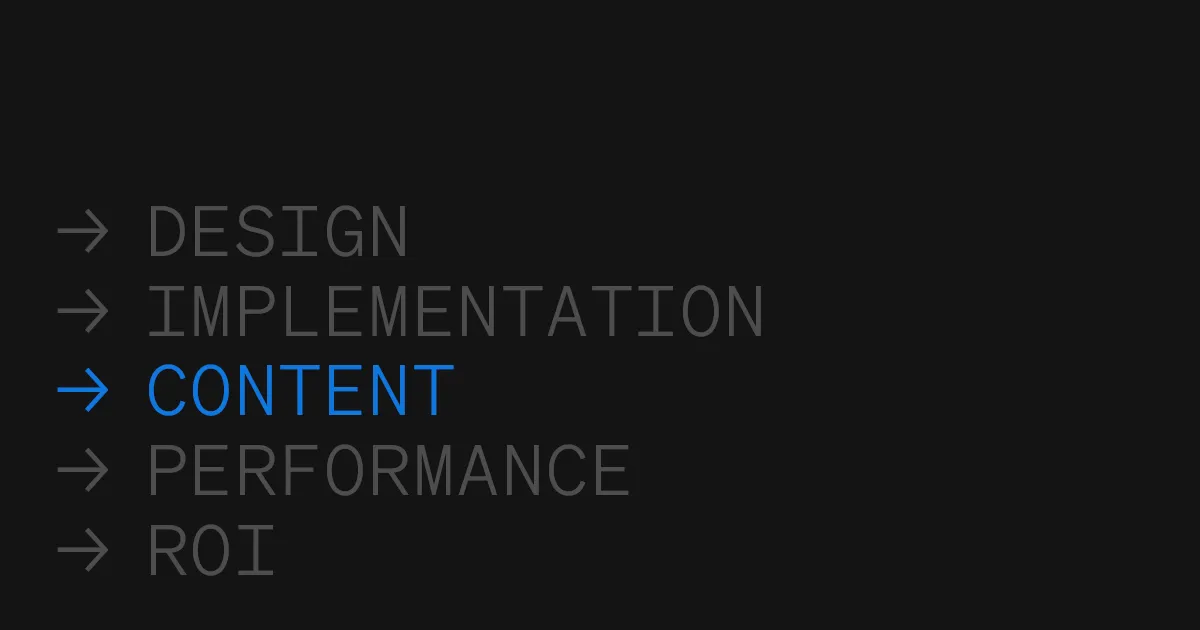
Intranet content management
Making sure the information on your intranet is relevant, up to date, and easily accessible can be a constant battle unless your intranet is designed to help you govern itself. An intranet with automated governance will automatically remind content managers when it’s time to review their content and even use AI to look for old, unused content and mark it for deletion.
Creating engaging content for your intranet
Engaging content helps to captivate and hold the attention of employees, ensuring they stay informed, motivated and connected. Relevant content can include news articles, videos, infographics, interactive quizzes, polls, surveys and employee spotlights, among other creative formats.
Ultimately, investing time and effort into creating engaging content for your intranet can greatly contribute to a positive and thriving work culture — so be sure to look for one that can serve a wide variety of content formats natively, including video.
Discover how to boost employee engagement with intranet content: 5 ways to use visual content
Organizing and managing intranet content
When considering how to organize and manage your intranet content, be sure to consider the following key intranet content types:
- Official company policies, documents and forms
- Current strategies, tactics and goals
- Company values and social responsibility
- Brand center — including a digital library
- Information on products and services
- Info on sites, regions and locations
- Welcome info for new hires
- HR info and onboarding
- IT and self-service processes
- Internal task and process documentation
- Training resources and software manuals
Learn more about these content types: Essential intranet content
Employing analytics for intranet content strategy
Analytics can offer valuable insights into how employees interact with your intranet, what content they find useful, and where your content could be improved.
By analyzing page views, click-through rates and time spent on pages, organizations can make data-driven decisions to optimize their intranet content strategy.
For enterprise-level organizations, AI is essential in surfacing these insights through both traditional analytics and employee listening.
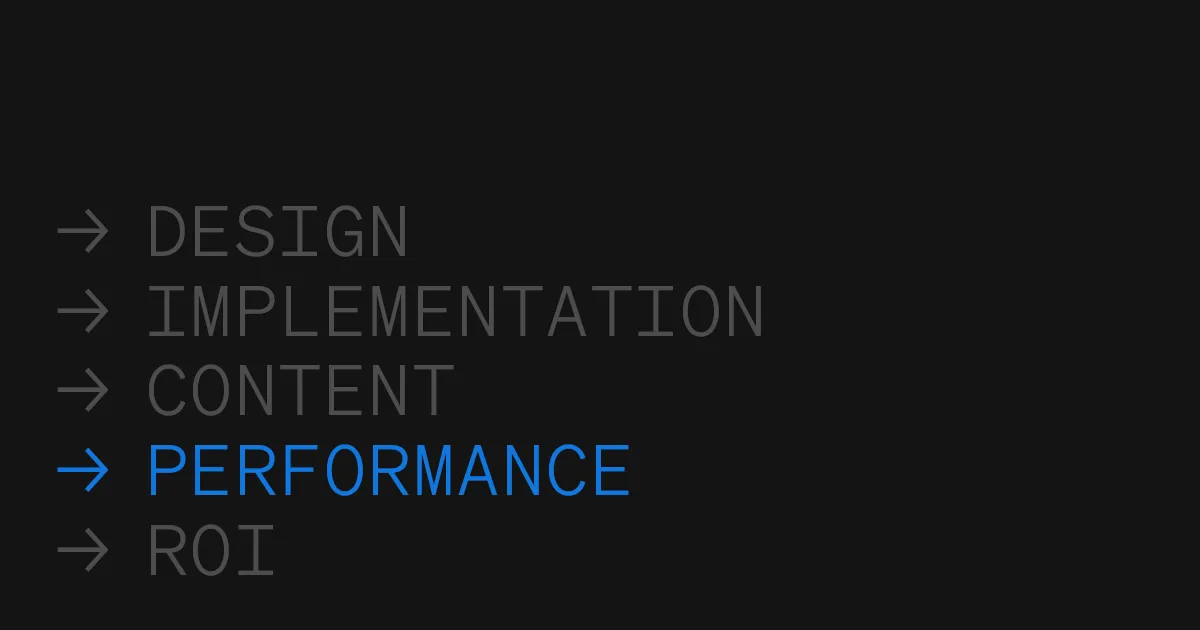
Performance: Intranet benchmarking, analytics and optimization
If you’re building your own intranet in-house, it’s important to monitor your intranet performance regularly against preset benchmarks to identify any potential issues or bottlenecks that may be affecting the network’s speed or performance. Ongoing optimization includes adjusting and improving the intranet infrastructure to enhance its performance and user experience. This may include optimizing network bandwidth, improving server response times, or implementing caching mechanisms.
Take a deeper dive into intranet management and optimization: The ultimate guide to managing a successful modern intranet
Importance of intranet performance monitoring
Effective intranet monitoring helps maintain optimal performance levels, minimize downtime, and maximize productivity. Monitoring key performance indicators (KPIs) such as network latency, bandwidth utilization and server response times helps businesses make informed choices in optimizing their intranet performance.
Additionally, regular monitoring helps identify any security vulnerabilities or breaches so you can ensure the safety and integrity of your internal network and its sensitive data.
Implementing intranet upgrades: Best practices
If you choose not to outsource your intranet, implementing upgrades requires careful planning and adherence to best practices to ensure a smooth transition. One of the key aspects of this process is conducting a thorough analysis of the current intranet system to identify its strengths and weaknesses. This assessment will help in determining the specific upgrades needed.
Involve stakeholders from different departments to gather their requirements and expectations.
Once your upgrades are built and implemented, several rounds of communication and training sessions may be needed to ensure that employees understand the changes and are able to adapt to your upgraded intranet system. Your IT team should also be prepared for a significant uptick in support tickets.
Optimizing intranet based on employee feedback
Gathering input from employees can help you identify areas of improvement and make any necessary changes to your intranet’s configuration. Ideally, your intranet should be able to help you with this process, offering tools for polls, surveys and other employee feedback to make sure your platform is meeting employee needs.
Learn how to break your intranet’s IT dependency cycle: Empowering teams with autonomous features
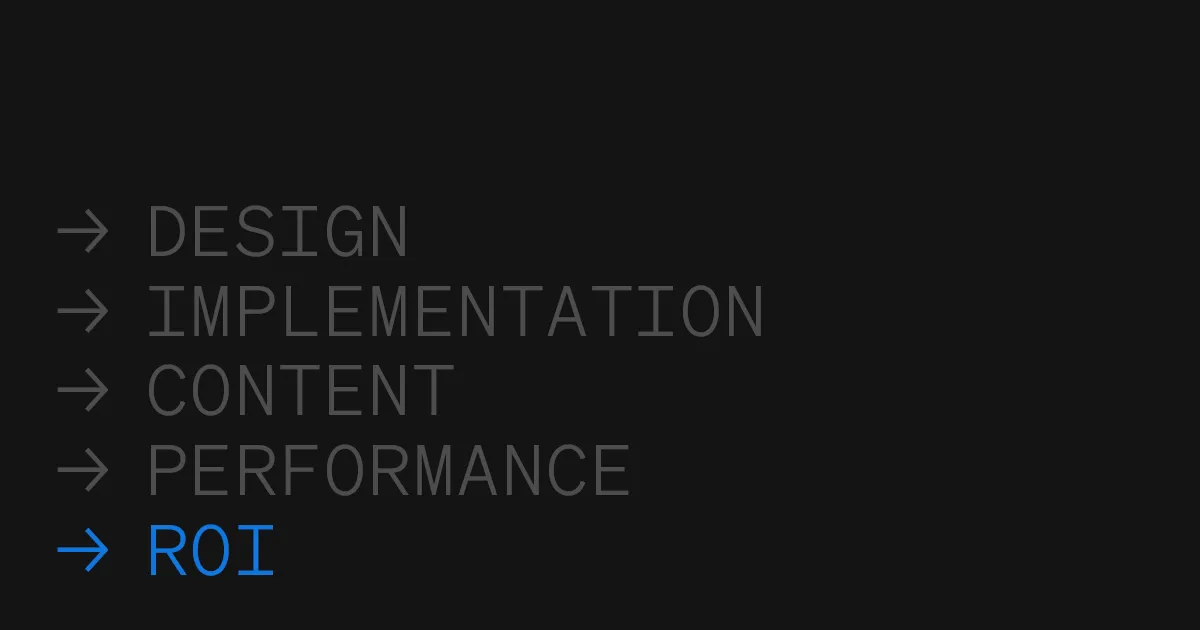
Intranet ROI measurement and analytics
Measuring your intranet’s ROI is a key step in justifying the resources allocated to its implementation. Analytics play a crucial role in this process by providing valuable insights into the intranet’s performance and usage. By tracking metrics such as user engagement, page views, time spent on the platform and user feedback, organizations can assess the impact of their intranet on employee productivity, collaboration and overall business outcomes. These insights enable informed decision-making to optimize the intranet, improve its functionality, and maximize its ROI.
Understanding intranet ROI measurement
Measuring the return on investment (ROI) for an intranet is essential for organizations to understand the value and effectiveness of their internal communication and collaboration platform. Key metrics to consider include employee engagement, time saved on tasks, reduction in email usage, and improved collaboration among teams.
In fact, a Forrester study on the Economic Impact of Simpplr’s Intranet found that organizations with legacy tools were able to save some $300,000 over three years by integrating with Simpplr’s intranet.
Using analytics to understand intranet usage
Analytics can help you understand how employees are engaging with your internal communication platform. By analyzing intranet data, organizations can surface patterns and trends in employee behavior, allowing for more targeted communications, wider engagement, and broader reach for internal communications.
Optimizing intranet for maximum return on investment
The following steps can help you maximize your intranet ROI:
1. Assess current usage: Conduct a thorough analysis of how your employees are currently using the intranet to identify any pain points or areas that need improvement.
2. Personalize user experience: Tailor the intranet to suit individual employees’ needs by providing personalized dashboards, notifications and content recommendations to maximize adoption.
3. Integrate with other systems: Integrate your intranet with other tools and systems, such as HRIS, project management or CRM software.
4. Measure and analyze: Continuously measure and analyze the intranet’s performance and usage. Monitor key metrics, such as page views, engagement and user feedback.
6. Apply content governance: Keep your intranet current and relevant by adding new content, updating existing information, and deleting outdated information.
How Simpplr can help
Want to make it all easy? Simpplr’s AI-powered modern intranet software is trusted by more than 1,000 global brands to elevate the employee experience and improve productivity. Its intuitive platform enables organizations to build effective digital workplaces with highly engaging features and functionality. Book a demo today to learn more.












